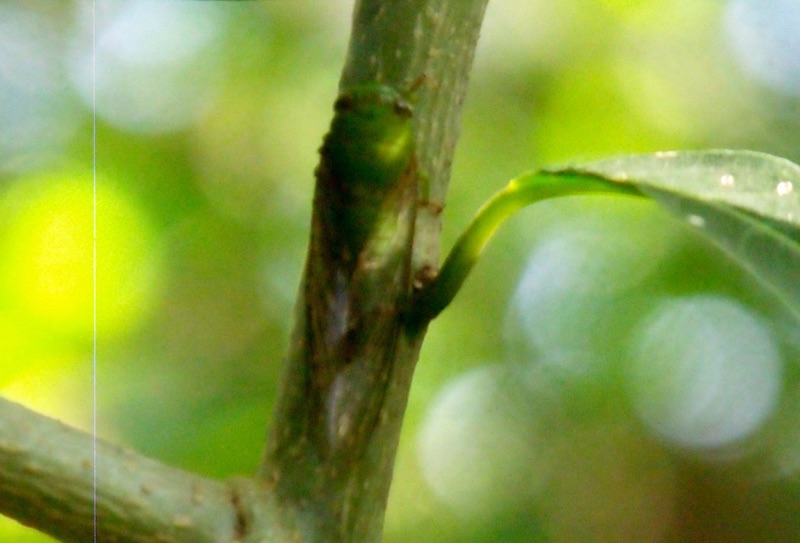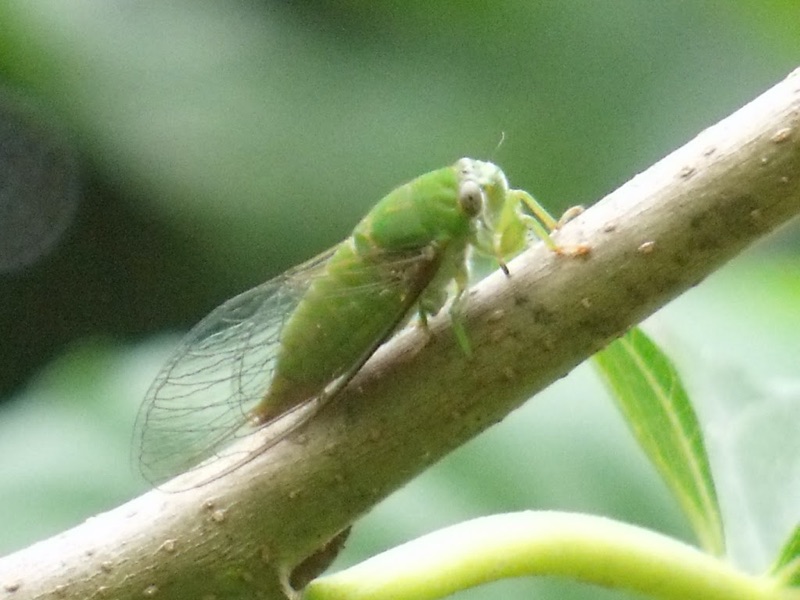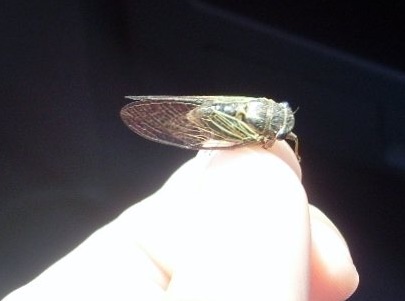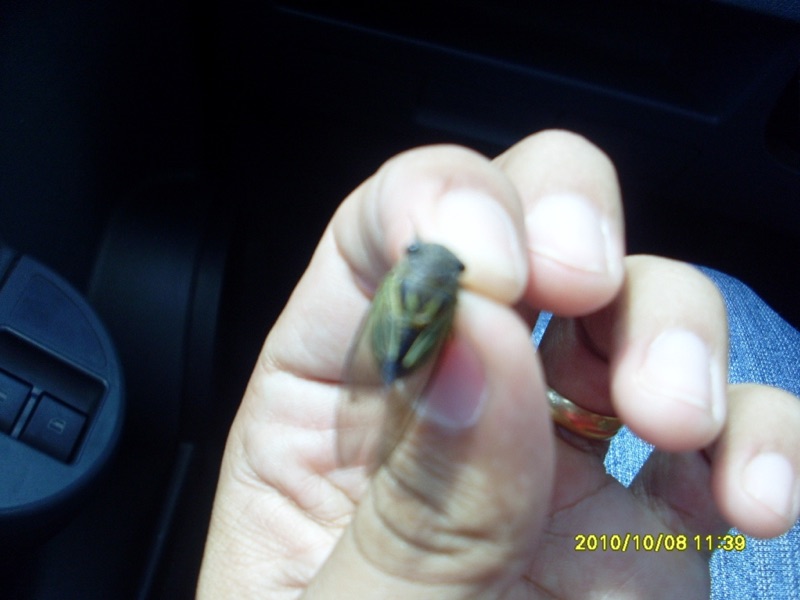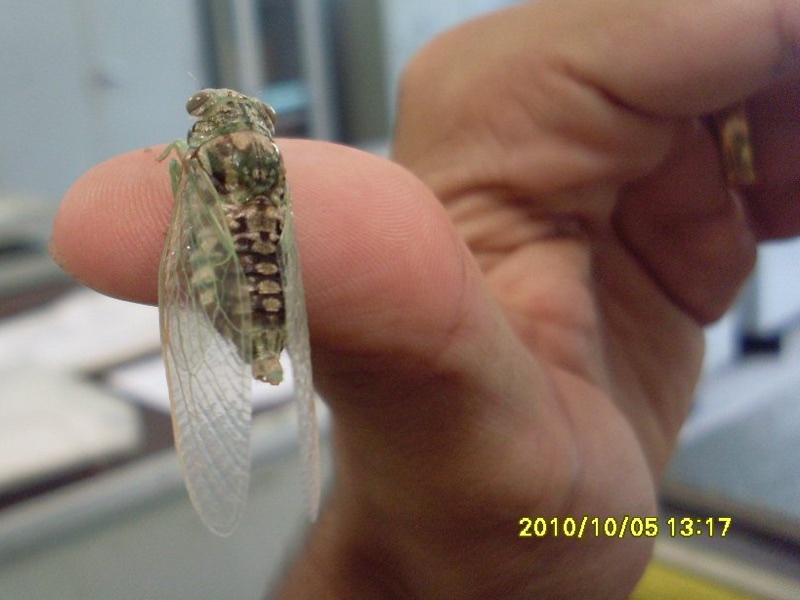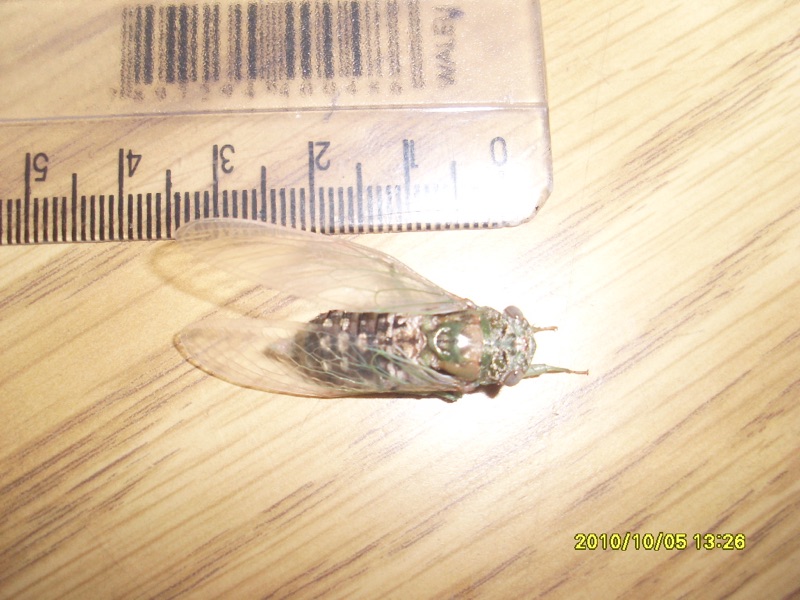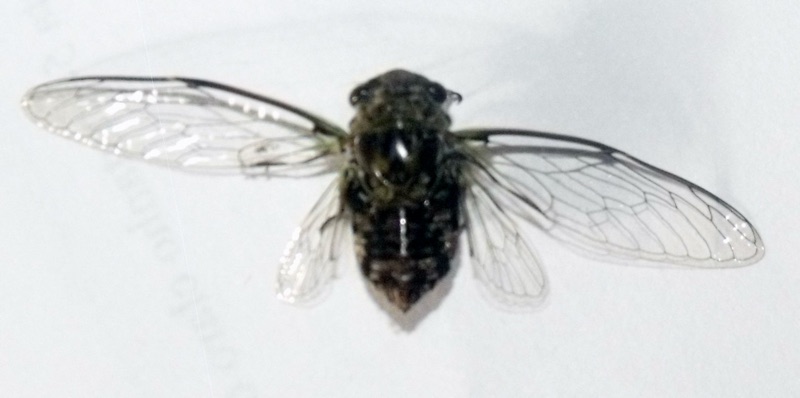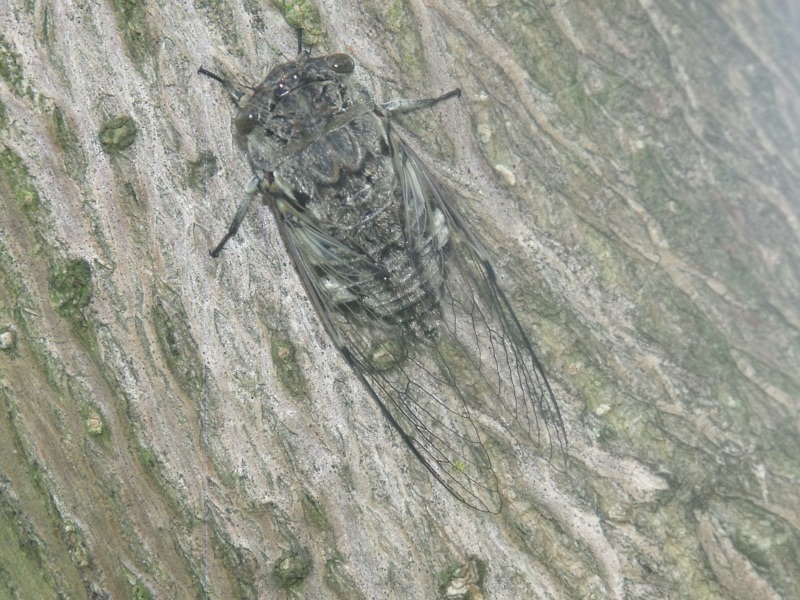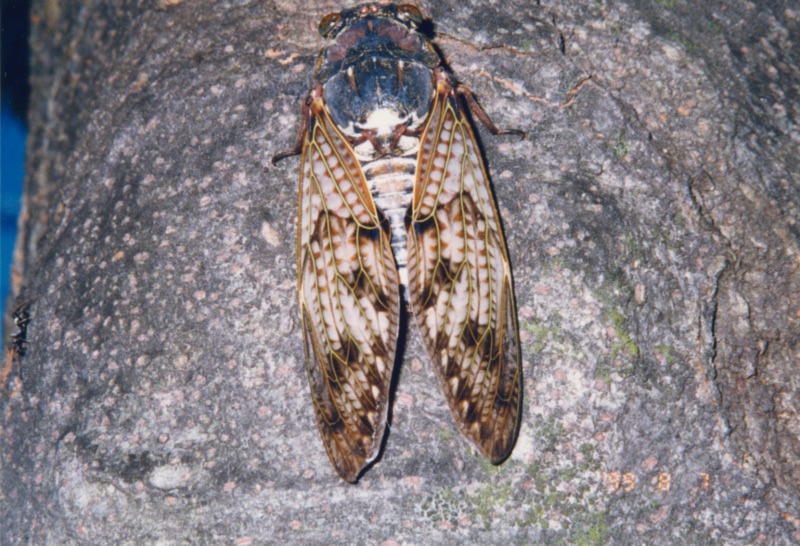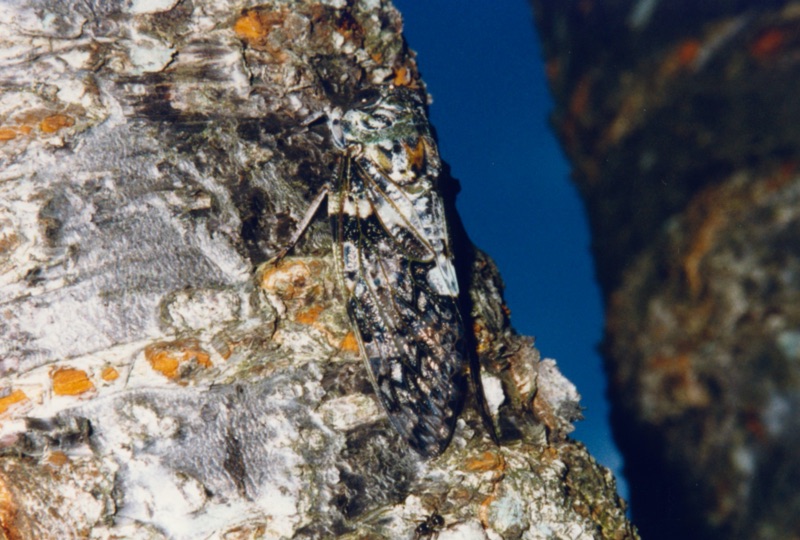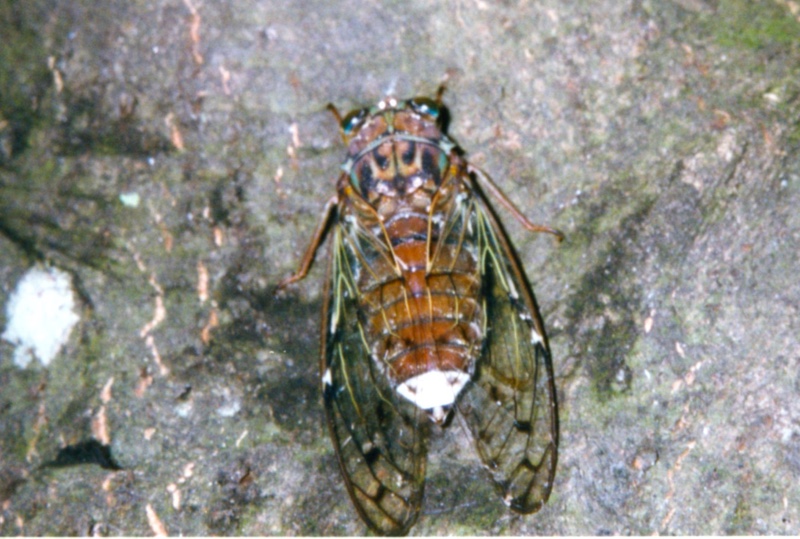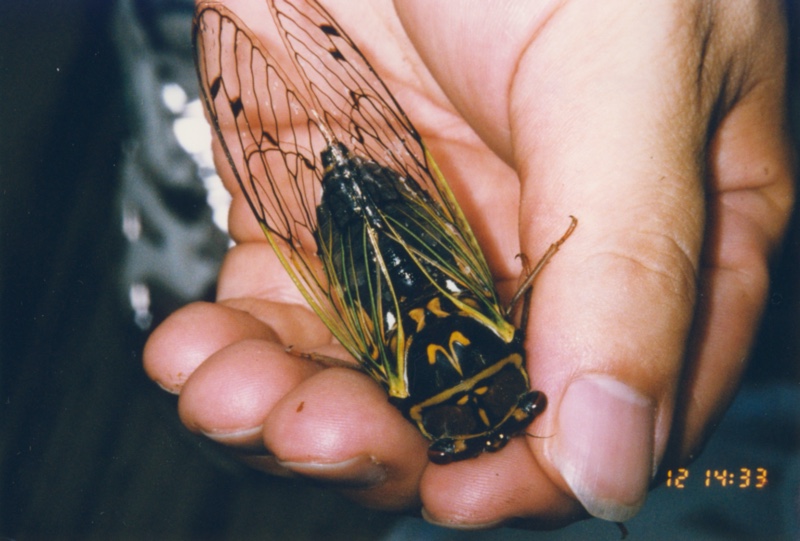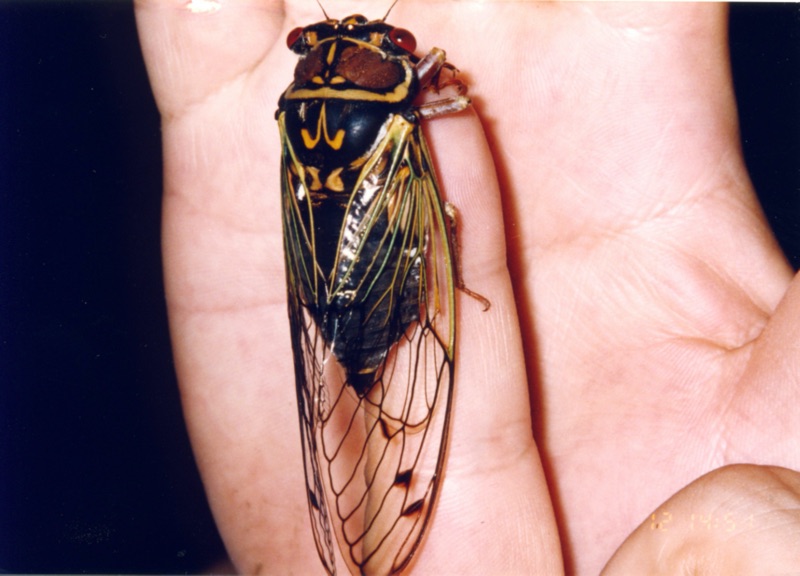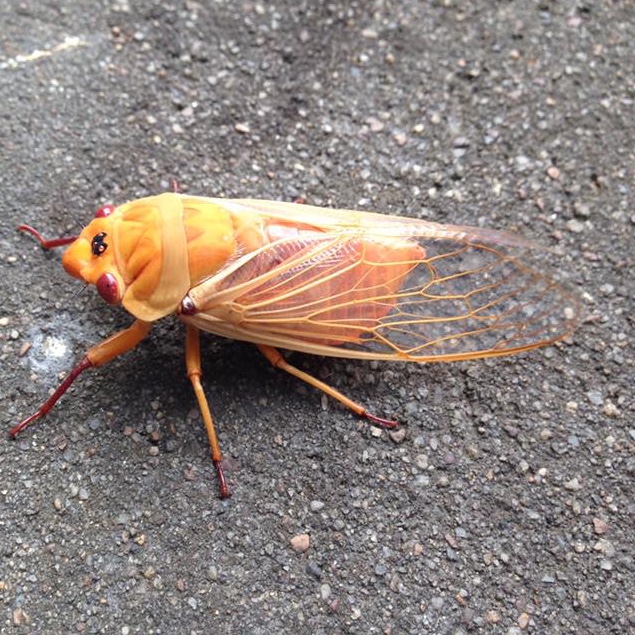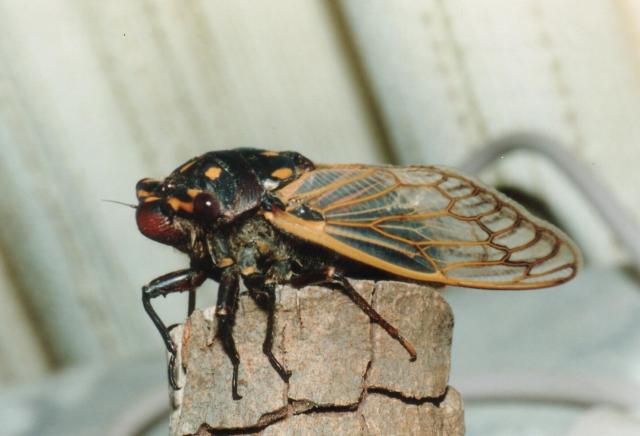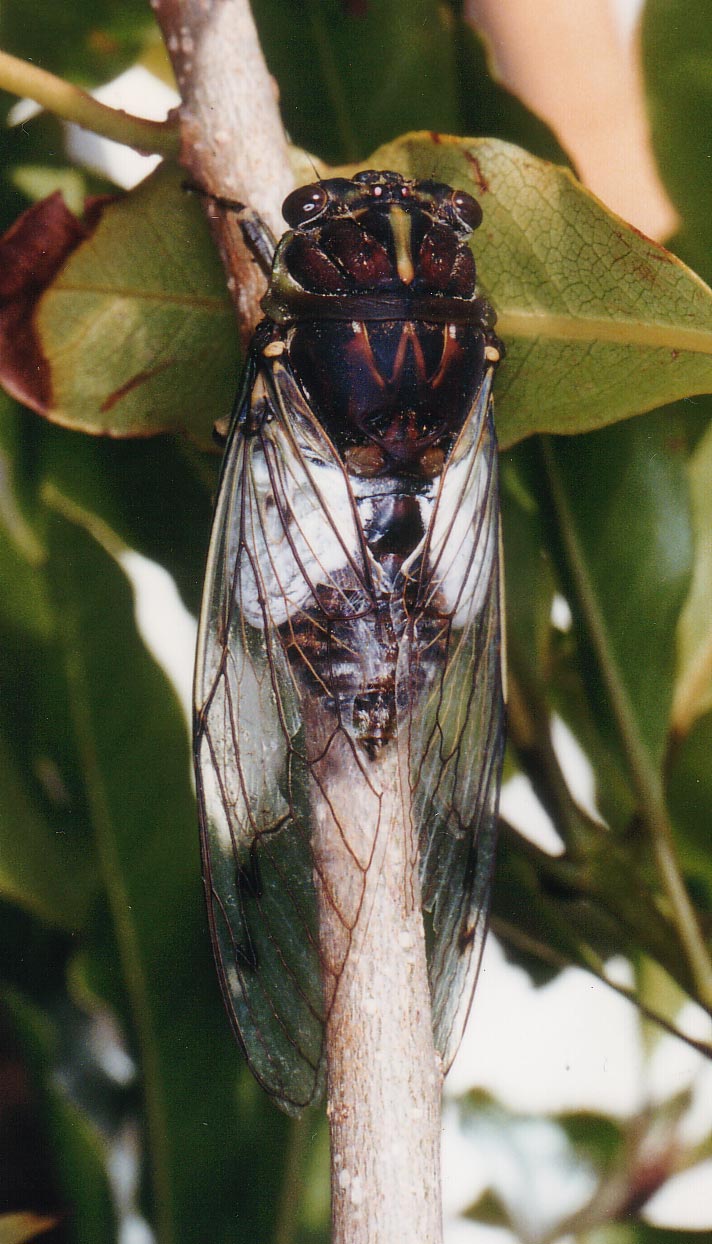A few more mystery cicadas from Jairo from the Cigarras do Brasil — Brazilian Cicadas website. These cicadas are from Brazil. This time with videos featuring their song.
Cicada A:
“Now i’m sending you a video of a strange cicada song, very highly pitched, and two blurry photos of it. Sorry i couldn’t take better pictures (they’re very small and hard to catch), but i hope it can help you.
As far as i could see, this cicada seems to belong to the genus Taphura. I saw some cicadas of this genus and it really loks like them (if only the pictures showed that…). They have a green head and mesonotum, but the abdomen has a different color, probably beige or brown. Their belly seem to be white, with beige legs. Their song starts with clicks from a male, then another male responds to it, and then all males in the place sing together a very fast buzz. Probably i recorded here their “alarm call”, to warn the others about the presence of a stranger, ’cause their song was very erratic.”
Images of this cicada (yeah, they’re not the best quality):
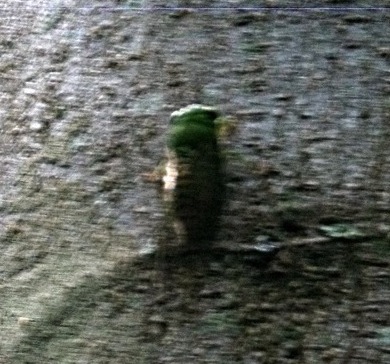
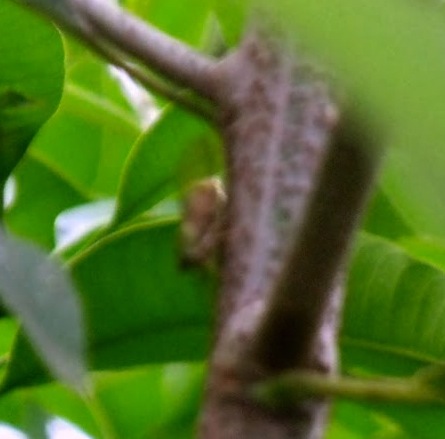
Cicada B:
“This one really gets me intrigued! Never saw the cicada (that’s why i don’t have pics), but i’ve heard it a lot! Very low sound, this song is a succession of short calls (ki-ki-ki-ki). Males singing together seem to be duelling. All i can say is it seems to be from genus Dorisiana, but without pictures i cannot prove this.
This one is really a challenge.”
Cicada C:
“I made this recording in October 5th 2010 (spring), and you can hear the second part of a cicada song (i couldn’t record the first part). The song starts with a slow sequence of short calls (ki-ki-ki), and then it accelerates and becomes a fast sequence of zizizi sounds. People will say that it sounds like Fidicina mannifera or F. torresi, but i know these two species enough to say that it wasn’t any of them, along with the fact that they don’t sing in trees as high as the one in the footage. Could it be Majeorona aper??? They appear in springtime, and i don’t know their song!”
